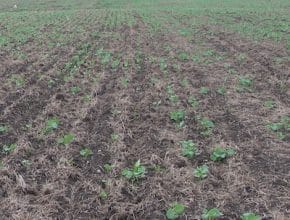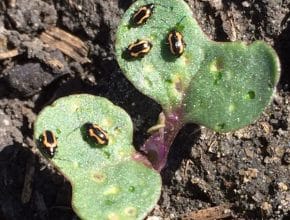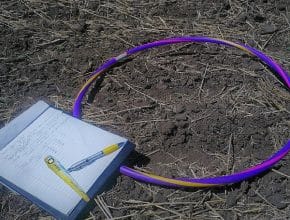Test your cutworm knowledge. Answers to these five questions are found in the new guide, "Cutworm Pests of Crops in Western Canada" from Agriculture and Agri-Food Canada…
May 31, 2017 - Issue 10
-
-
Why scout? Reason one: To confirm that cutworms are the cause. For example, fungal seedling diseases can cause seed and seedling decay that can lead to patches of missing plants Reason two: To identify the cutworm species present as this can influence management decisions. Underground-feeding cutworms are less likely to encounter spray, for one thing. And thresholds vary by species…
-
Early weeds have large impact on canola yield potential. Research has shown a yield advantage of 3 bu./ac. when weeds are removed at the 1- to 2-leaf stage of canola instead of waiting until the 3- to 4-leaf stage. That advantage rises to 7 bu./ac. when comparing weed control at the 1- to 2-leaf stage versus the 6- to 7-leaf…
-
-
A few flea beetles in a field are not worth the time and investment to spray. They will not cause economic losses. Only when defoliation reaches 25% across the field and feeding pressure continues does it make sense to spray for flea beetles…
-
One plant count after emergence may not be enough to tell you about seed survival and whether the seeding rate and seeding tool did the job it was supposed to do. Seedling diseases, flea beetles, frost and other factors can influence seed survival, and unless scouting and counts are done repeatedly through the first few weeks after seeding, these influences…
-
Rain after seeding can often cause top soil to crust, stopping the emergence of canola seedlings. Canola seedlings can’t penetrate the crust, and often curl back and die. No research has been conducted to show the best ways to break up crusting and free the crop. If a few plants have emerged, it may be best to leave them be…
-
We had two questions in the past week about top-dressing fertilizer after seeding. 1. How early is too early to top dress? 2. Does adding S stabilize N against losses?…



